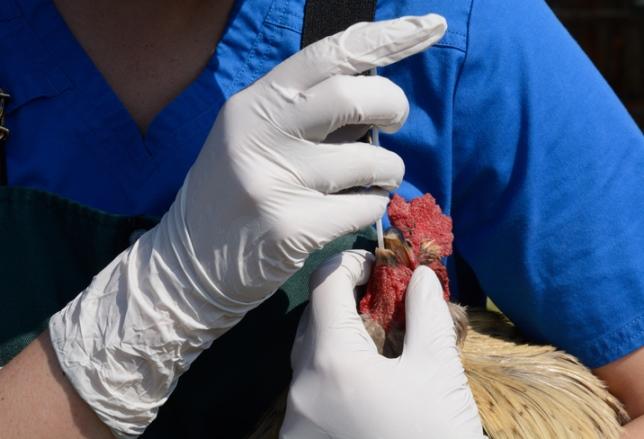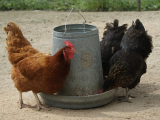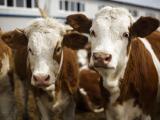Kentucky's agriculture department yesterday announced that tests have confirmed low-pathogenic H7N9 avian flu at a commercial poultry farm, making it the third state to report the virus.
In related developments, Alabama officials announced that tests have likewise confirmed low-pathogenic H7N9 at two locations in different counties.
Expanded surveillance
Robert Stout, DVM, Kentucky's state veterinarian, said in a statement from the Kentucky Department of Agriculture (KDA) that the virus was first detected in routine preslaughter tests on a poultry flock from Christian County that were conducted by the Murray State University Breathitt Veterinary Center in Hopkinsville.
Christian County is located in western Kentucky near Tennessee's northern border. It is not adjacent to either of the two Tennessee counties that recently reported three H7N9 influenza outbreaks—one involving the low-pathogenic form and two the more worrisome highly pathogenic virus.
No clinical signs of illness were seen in the birds, and the location was placed under quarantine, with 22,000 hens destroyed as a precaution.
The US Department of Agriculture National Veterinary Services Laboratory (NVSL) confirmed the H7N9 finding.
State and federal partners are conducting surveillance in flocks within a 6-mile radius of the affected farm, and the company that owns the farm is doing additional testing at its other facilities in the area.
Kentucky's poultry and egg industry generated $1.2 billion in 2015, the KDA said.
Alabama reports 2 more low-path confirmations
Meanwhile, Alabama officials today announced that two flocks located 170 miles apart have tested positive for low-pathogenic H7N9. One is a commercial operation in Pickens County in the west central part of the state and the other is a backyard holding in Madison County in northern Alabama.
According to a press release from the Alabama Department of Agriculture and Industry (ADAI), the virus in the Pickens County flock was found during routine screening in tests conducted at the ADAI State Diagnostic Laboratory in Auburn, Ala. The birds have been placed under quarantine, and control measures are under way as a precaution.
The NVSL also confirmed the findings in the backyard flock from Madison County, and the ADAI said surveillance zones have been placed around the outbreak locations in Pickens and Madison counties.
Alabama has now reported three low-pathogenic H7N9 detections. On Mar 16 officials said the NVSL had confirmed the virus in guinea fowl from a flea market in Jackson County, which neighbors Madison County.
A suspected outbreak was also reported in a commercial flock in Lauderdale County, which prompted further testing. Dan Autrey, chief of staff for Alabama agriculture commissioner John McMillan, told CIDRAP News that follow-up tests turned up very little virus. He added that, based on serology tests, the findings are considered presumptive positive for low-pathogenic avian influenza.
Among the response steps, the state has banned poultry movement in some locations and has temporarily banned poultry exhibitions and assemblies.
Tony Frazier, DVM, Alabama's state veterinarian, said in the release, "The health of our poultry is critically important at this time. With confirmed cases of low pathogenic avian influenza in Alabama in both commercial and backyard flocks, the order reducing the assembly and commingling of poultry is the most effective way to practice strict biosecurity measures in our state."
The H7N9 viruses recently detected in the United States are related to North American wild bird lineages and have no connection to the H7N9 strain sickening people and poultry in China.
See also:
Mar 20 KDA statement
Mar 21 ADAI press release




















